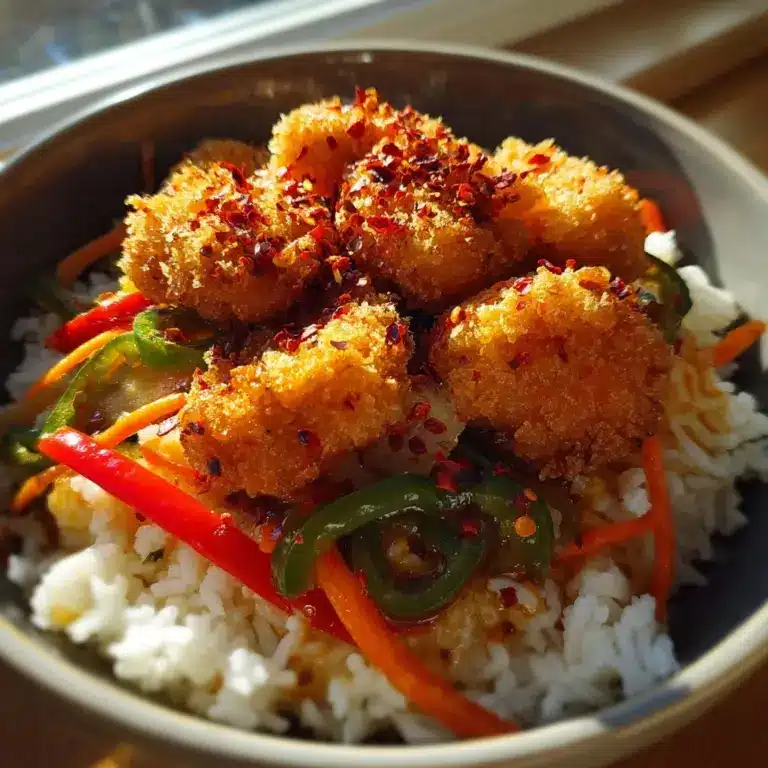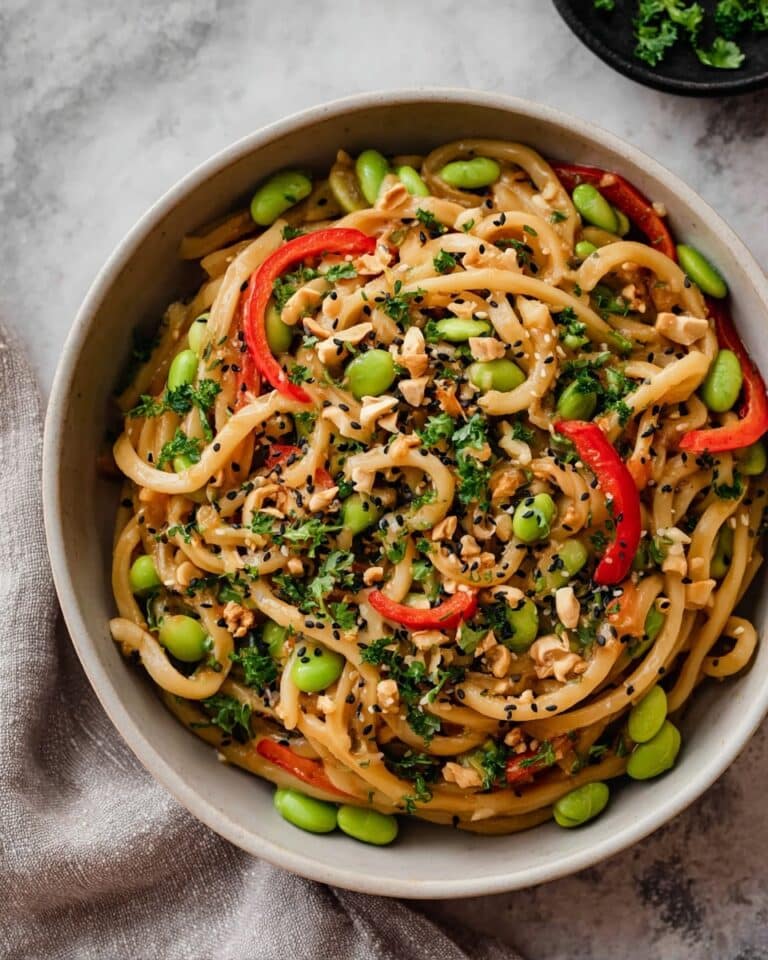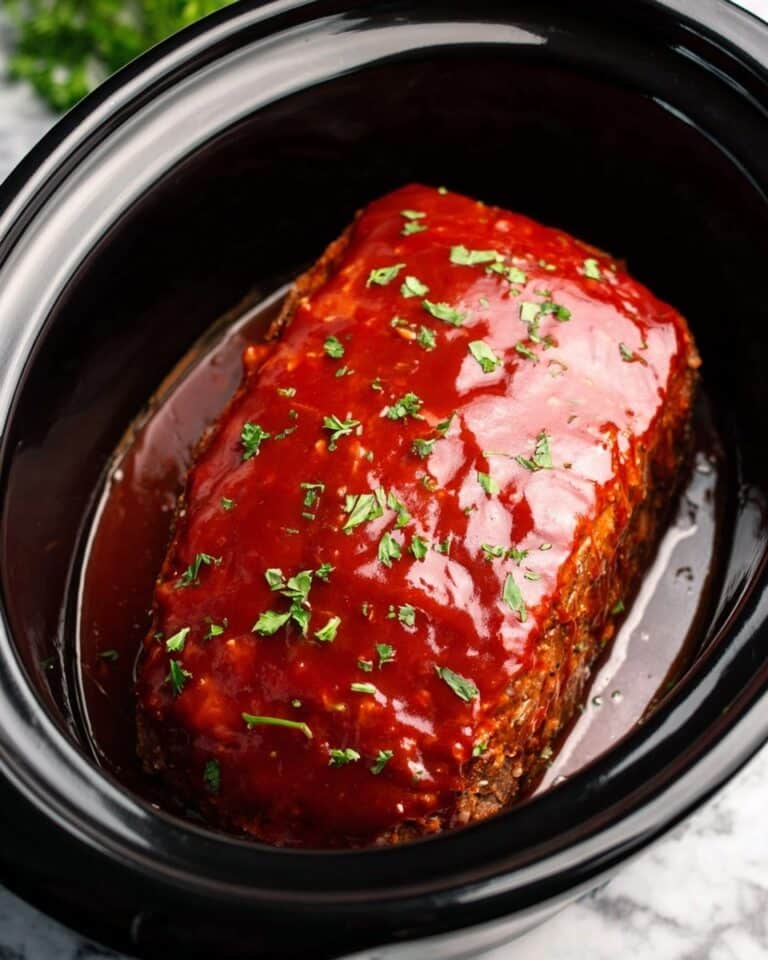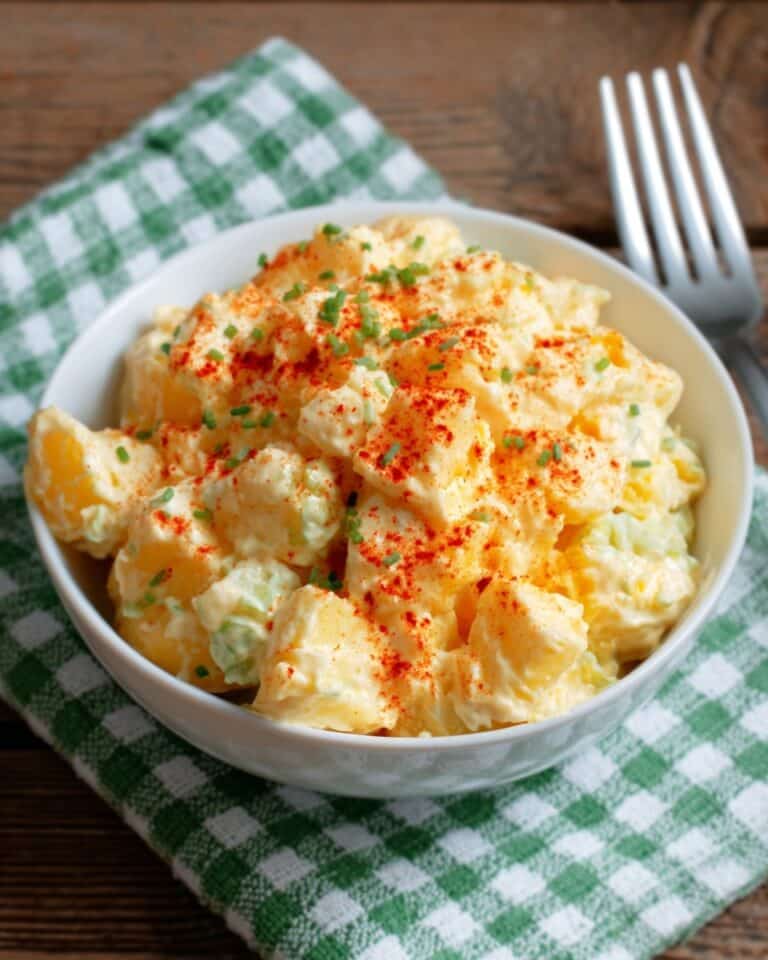Korean Beef Bibimbap Bowl Recipe
Introduction
Experience the vibrant flavors of Korea with this easy and delicious Beef Bibimbap Bowl. Packed with savory ground beef, fresh vegetables, and a perfectly fried egg, this dish is a comforting and colorful meal that comes together in under an hour.
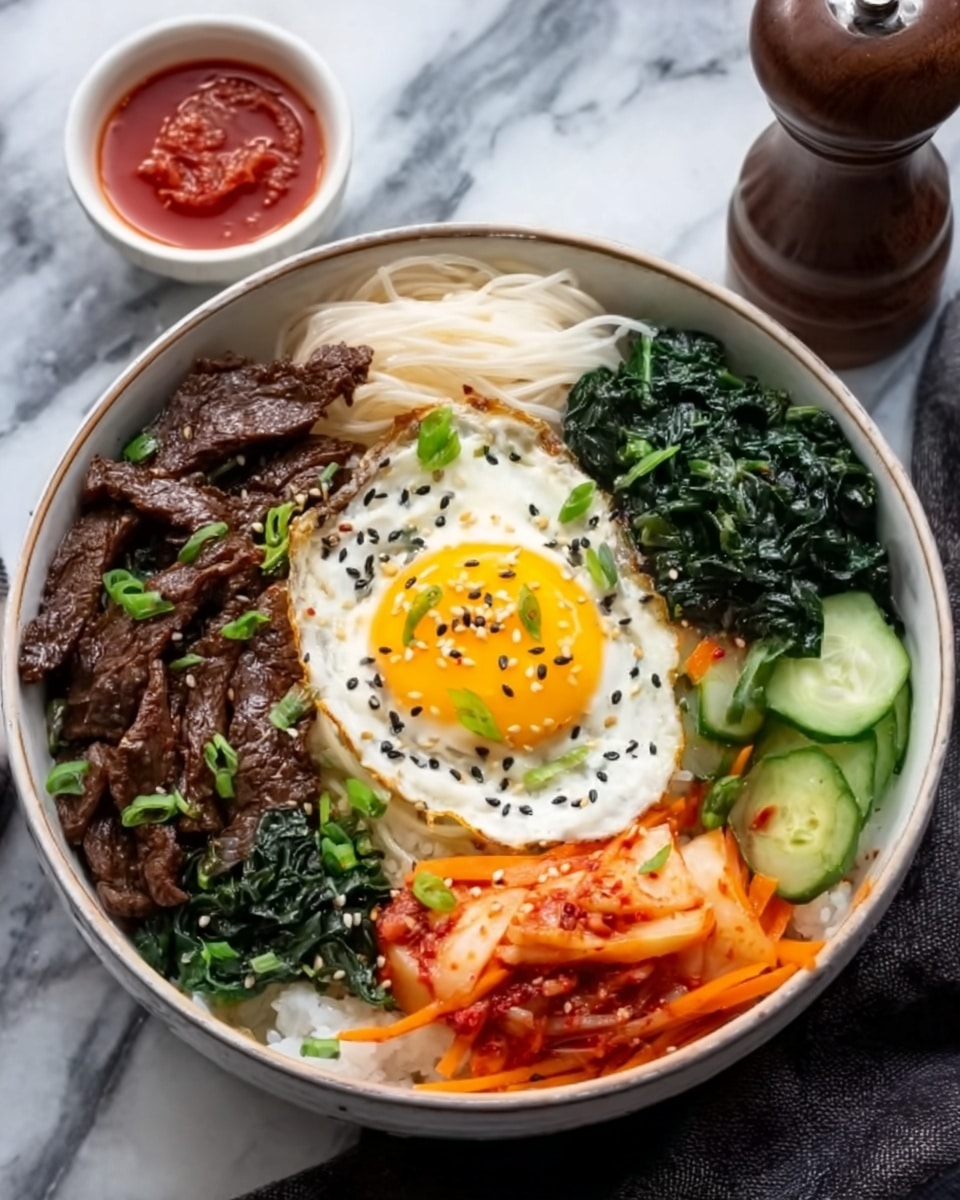
Ingredients
- 1 lb lean ground beef
- 2 cups short-grain white rice (cooked)
- 1 cup carrots (julienned)
- 1 cup spinach (fresh)
- 1 cup zucchini (sliced)
- 1 cup bean sprouts
- 3 tbsp gochujang sauce (adjust for spice level)
- 1 tbsp sesame oil
- 2 tbsp low-sodium soy sauce
- 4 eggs
Instructions
- Step 1: Cook the rice according to package instructions and set it aside to keep warm.
- Step 2: In a skillet over medium-high heat, brown the ground beef for 5 to 7 minutes, breaking it apart and draining any excess fat.
- Step 3: Stir in the gochujang sauce, soy sauce, and sesame oil into the beef. Reduce heat to low and simmer for 5 minutes to blend the flavors.
- Step 4: Heat a bit of sesame oil in another pan and sauté the carrots, spinach, zucchini, and bean sprouts over medium heat until the vegetables are tender-crisp, about 7 minutes.
- Step 5: In a separate non-stick pan, fry the eggs sunny-side up until the whites are set but the yolks remain runny, approximately 3 minutes.
- Step 6: To assemble, layer the cooked rice at the bottom of each bowl. Top with the spicy beef mixture, then the sautéed vegetables. Finish by placing a fried egg on top and drizzle extra gochujang if desired.
Tips & Variations
- Use a hot stone bowl if you have one to achieve a crispy rice crust called “nurungji” for extra texture.
- Swap the ground beef for ground turkey or tofu for a lighter or vegetarian option.
- Adjust gochujang to your preferred spice level, or mix it with sesame oil and a bit of sugar to mellow the heat.
- Feel free to add other vegetables like mushrooms or bell peppers to customize your bowl.
Storage
Store any leftover components separately in airtight containers in the refrigerator for up to 3 days. Reheat the rice and beef gently in the microwave or on the stovetop, then add fresh sautéed vegetables and a newly cooked egg for the best taste and texture.
How to Serve
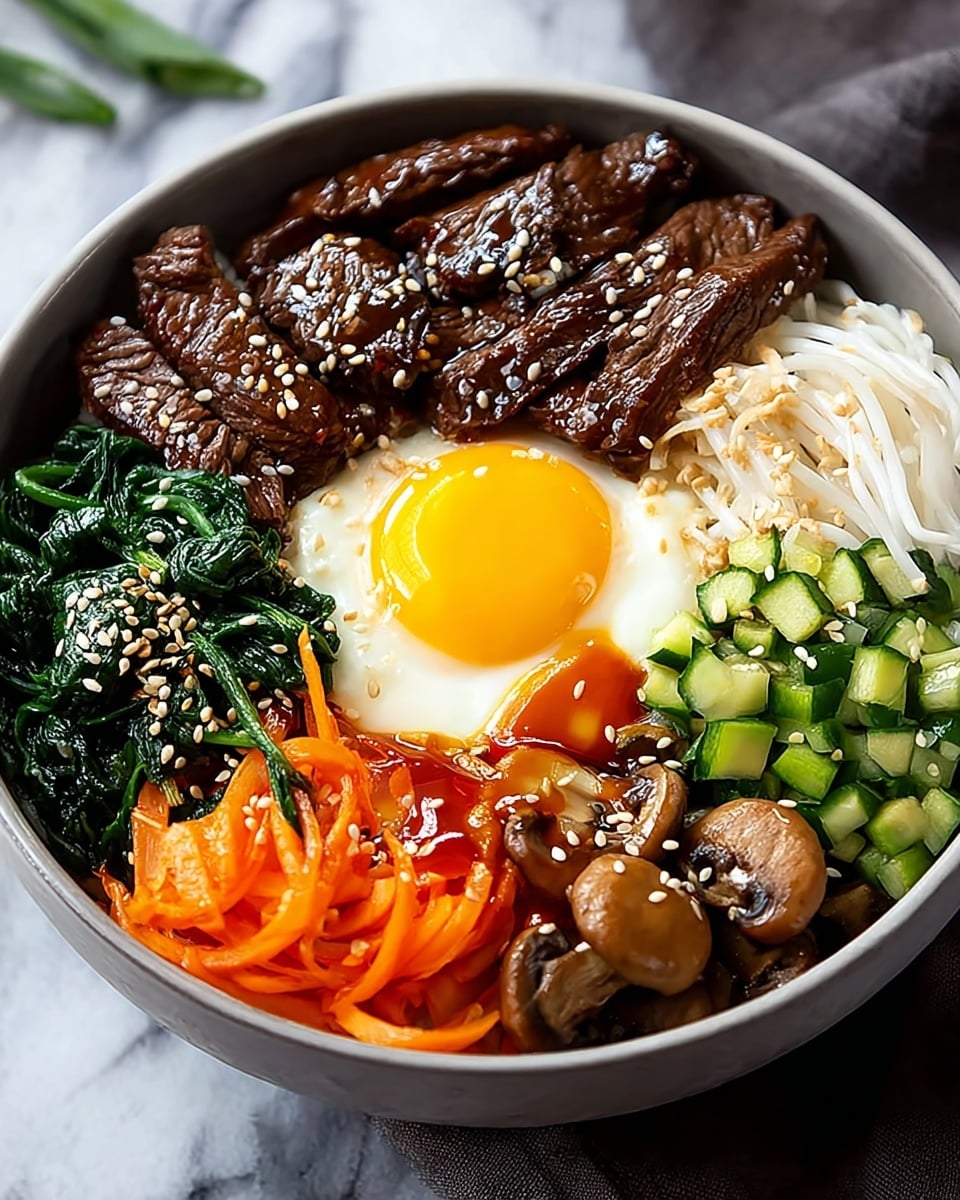
Serve this delicious recipe with your favorite sides.
FAQs
Can I use other types of rice for bibimbap?
While short-grain white rice is traditional for its sticky texture, you can use jasmine or brown rice if you prefer, though the texture will be slightly different.
How spicy is gochujang, and can I omit it?
Gochujang is a Korean chili paste that offers moderate heat with a sweet and savory flavor. You can adjust the amount to your taste or omit it entirely for a milder dish, though it does contribute a signature flavor.
Print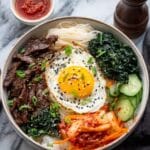
Korean Beef Bibimbap Bowl Recipe
- Total Time: 50 minutes
- Yield: 4 servings 1x
Description
This Korean Beef Bibimbap Bowl is a vibrant and flavorful one-bowl meal combining tender ground beef seasoned with spicy gochujang sauce, sautéed fresh vegetables, and a perfectly fried sunny-side-up egg on a bed of warm, fluffy white rice. This recipe offers a harmonious balance of textures and bold Korean flavors, making it a satisfying and nutritious dinner option.
Ingredients
Meat and Protein
- 1 lb lean ground beef
- 4 eggs
Grains
- 2 cups short-grain white rice (cooked)
Vegetables
- 1 cup carrots (julienned)
- 1 cup spinach (fresh)
- 1 cup zucchini (sliced)
- 1 cup bean sprouts
Sauces and Oils
- 3 tbsp gochujang sauce (adjust for spice level)
- 1 tbsp sesame oil
- 2 tbsp low-sodium soy sauce
Instructions
- Cook the Rice: Prepare the short-grain white rice according to the package instructions. Once cooked, set aside and keep warm for assembling the bowls later.
- Brown the Ground Beef: Heat a skillet over medium-high heat and add the lean ground beef. Cook, stirring often and breaking it apart, until browned and fully cooked, about 5-7 minutes. Drain any excess fat from the skillet.
- Season the Beef: Stir in the gochujang sauce, low-sodium soy sauce, and 1 tablespoon of sesame oil into the cooked beef. Reduce the heat to low and let the mixture simmer gently for 5 minutes to meld the flavors.
- Sauté the Vegetables: In a separate pan, heat a bit of sesame oil over medium heat. Add the carrots, spinach, zucchini, and bean sprouts. Sauté the vegetables until they are tender-crisp, about 7 minutes, ensuring they retain some bite and freshness.
- Fry the Eggs: In a clean skillet, fry the eggs sunny-side up over medium heat until the egg whites are fully set but the yolks remain runny, approximately 3 minutes. This adds richness to the bibimbap bowl.
- Assemble the Bowls: Layer each bowl by adding a base of warm cooked rice, then top with the seasoned ground beef mixture and sautéed vegetables. Place a fried sunny-side-up egg on top. Optionally, drizzle extra gochujang sauce for added spice before serving.
Notes
- You can adjust the amount of gochujang to suit your preferred spice level.
- Use fresh vegetables for the best texture and taste. Feel free to substitute or add other vegetables like mushrooms or cucumbers.
- For a vegetarian version, replace ground beef with marinated tofu or mushrooms.
- Ensure the rice is warm when assembling to keep the bowl comforting and satisfying.
- Leftovers can be refrigerated and reheated; add a fresh egg on top when serving again.
- Prep Time: 15 minutes
- Cook Time: 35 minutes
- Category: Main Dish
- Method: Stovetop
- Cuisine: Korean
Keywords: Korean beef bibimbap, bibimbap bowl, Korean rice bowl, ground beef bibimbap, Korean recipe, spicy beef bibimbap


